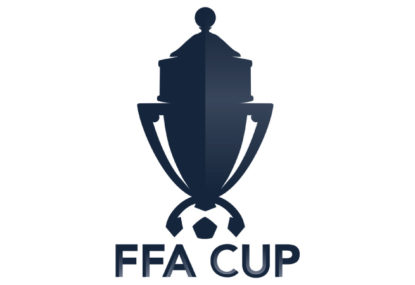There’s a certain charm to a change-room where there’s only one shower with decent water flow (first on right), a stubborn toilet door that refuses to close properly (push, pull down, push again) and a lonely broken clock that tells you it’s been 5.45 for the past three years.
Walk down the bronze-tiled stairs and through the exposed-brick tunnel leading out onto the pitch, and the magic follows you still.
Out here, the grass has given in to winter’s bite, bearing ditches and divots that would make even the most cultured of touches curdle.
It’s true – the peculiar little intricacies are what make this place special. Only seasoned regulars will know of the strange pocket of cold air that houses itself in the southeastern corner of the ground. Or of the stupidly curious bird (is it a tawny frogmouth?) that sometimes elects to perch itself on the crossbar during training hours.
But one thing’s common knowledge: if your shot vaults over the fence, it’s either cracking someone’s windscreen at one end, or it’s losing itself in a forest that leads to who-knows-where at the other.
This, in all its understated glory, is Melita Stadium: home to Parramatta FC, and scene of Tuesday night’s FFA Cup clash between the Eagles and St Albans of Melbourne.
I play for Parramatta. I didn’t on Tuesday though, as I sat in the Donald Agius stand, nursing the sort of punctured fitness you get following a World Cup binge in Brazil.
Naturally, I was gutted with the result. A ripping 25-yard volley from Jan Koller doppelgänger Barry Devlin gave the Victorians a 1-0 win. The Saints held firm, seeing off a flurry of half-chances to book their passage to the round of 16.
The match itself wasn’t the most glittering of spectacles. It was far from the fabled cup tie, as compact defensive blocks and safety-first punts ruled above all else.
The night belonged very much to the players; a chance for up-and-comers, old-heads and all those in between to be at the centre of Australian football’s attention.
Yet on a deeper level, the night was an ode to those who still see Melita as a family. To those who laid the bronze tiles, the exposed bricks; those who cut through a jungle of red tape and political entanglement in the hope of preserving something they quite literally built from the ground up.
I can’t speak on behalf of St Albans, but I assume there’s a shared sentiment. How thrilling it must have been to see their humble club, founded by Croatian immigrants in 1975, represented on the national stage.
But for Parramatta, who like so many other ex-NSL clubs now sadly exists as a fading memory of its former self, Tuesday was a gratifying celebration of community.
The Melita of today might be down on resources, crowd attendances and general public interest, but don’t think for a second that the pride has evaporated entirely.
This past week, all club persons went about their preparations with the sort of gaiety not seen in South Granville for some time. A new regulation scoreboard was dutifully erected, badges were carefully sewn on jerseys, and the lines were expertly chalked by the same man who’s task it has been for the past 40-plus years.
Perhaps I’m too young to fully appreciate Australian football of yesteryear. Like most good wogboys, my NSL education largely consisted of happy-laps around Marconi Stadium, where cries of “Give it to Awaritefe!” would mix with whispers of how tomorrow’s players would never be as hard as Ray Richards.
Yet on Tuesday night, with the red and white checkered stand filled to near capacity, and the pitch-side hills scattered with onlookers, there was a half-glimpse into the window of the past.
The travelling party from Melbourne camped themselves on the eastern touchline, bellowing chorus after chorus.
Up in the terrace, old men gnawed at pumpkin seeds and grunted disapprovingly at every stray pass, while mothers in blankets and beanies traded tales from the outside world.
Down below, packs of red-frog-powered kids roamed the grassy perimeter, fighting to be the one to throw the ball back over the fence.
I won’t overplay it, but by all accounts things just aren’t what they used to be. The pastizzi has dried up, and the wooden Maltese rattle is nowhere to be heard. But I’d hazard a guess that Tuesday night was the first time in a long time that there’s been a queue to turn out of Everley Road.
For me though, the night was summed up before it even started.
There’s seconds until kick-off, and in the change room, we link together arm-in-arm as we always do, and fall silent as the gaffer delivers his final words from the centre of the huddle. Normally, a recurring tagline is that we simply go out and play for ourselves; work for the mate next you in the red shirt, and not worry about who’s watching or what’s expected.
His message is different this time. Play for each other, he says. Always play for each other. But tonight, remember who you’re representing. Because there’s more to a club than the 11 who’ll cross that white line.
And that’s what it’s all about, isn’t it? Whether you’re out on the field, washing the kit, or manning the barbie; whether you’re filling out team sheets, mowing lawns, or cheering loved ones on from the stands.
We all have that desire to be a part of something bigger than ourselves. We all want to be a part of the magic.
That’s why I love this game so much; this crazy, frustrating, soul-sucking, life-giving game.
Long live the Cup.





























































































